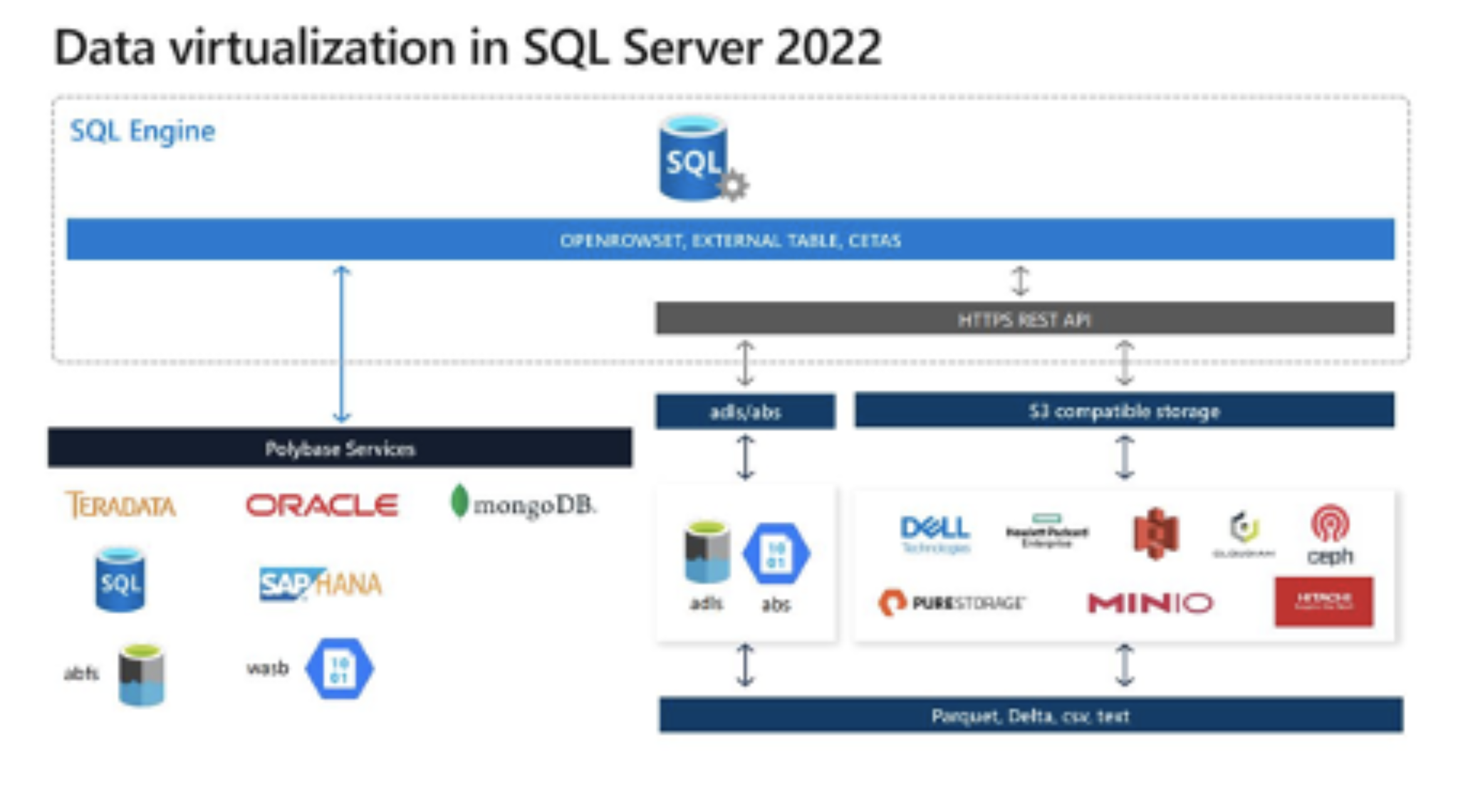Housing and backing up Microsoft SQL data has always had its challenges. Database administrators want control of their data, and they want it close to the processing. Storage admins have to contend with resolving data gravity issues while finding ways to back up the databases across different platforms and protocols. With Microsoft announcing new storage integrations with SQL Server 2022 at the recent PASS Data Community Summit, and using the power of the Pure Storage FlashBlade//S, DBAs and storage admins can finally find an easier path forward to these problems.
S3 and SQL Server 2022
At the 2022 PASS Summit, Microsoft announced that the next release of SQL Server would feature S3 (AWS Simple Storage Service) Object Storage integration. This is going to offer up Parquet, CSV, and Delta file support with the initial release. The SQL Server 2022 (16.x) release’s storage offerings are going to be more robust right out of the box, as opposed to gradually releasing additional file types. This could not have come at a better time considering Microsoft’s announcement that SQL Server 2019’s Big Data Clusters would be depreciated in future releases, impacting the ability to scale.

Pure Storage and Microsoft’s Relationship
There is a strong relationship between Pure Storage and Microsoft, including many Microsoft MVPs on Pure’s staff. With this relationship, Pure Storage has assisted Microsoft in the research and development of the S3 integrations with SQL Server 2022. While not the only partner in the ecosystem to help with this development, Pure Storage has been a leading alliance in this project.
Where Do Pure Storage and FlashBlade//S Fit?
Historically speaking, backing up SQL data away from the original storage array was a multi-step process when using S3. Pre-S3 availability, the SQL databases that ran on Pure Storage FlashArray, the data would be backed up to another FlashArray, and then a 3rd party tool would be utilized to convert to S3 and migrate to a FlashBlade. With the new announcement, the entire process is streamlined and data is moved directly to the FlashBlade, simplifying the work of both DBAs and storage administrators.
Besides simplifying the process of protecting the SQL Server data, the addition of S3 and the use of Pure Storage FlashBlade//S has certain benefits. The processing and storage horsepower of the //S allows storage administrators to scale out their SQL environments, rather than just scaling up.
Pure Storage also allows for a single namespace to be utilized. With the power of the FlashBlade//S’ multi-threading and read/write buffers, enables accelerated backup and restores. Data provided by Pure Storage also indicates that as the number of databases on an array grows, the speed at which data is backed up and restored also increases.
With the S3 protocol utilizing REST API, the syntax to configure backup and restoration targets is similar to what they already know. Pure Storage anticipates no barrier-to-entry or learning curve with the release of S3 for SQL Server 2022.
Final Thoughts
Time and time again, the innovation and collaboration that emerge from the team at Pure Storage elevate not only their offerings, but also what the partner ecosystem can deliver. By working with Microsoft, Pure Storage and others have simplified the day-to-day operations within the datacenter. DBAs and storage administrators can rest well knowing that the process to protect the SQL data has been improved.

